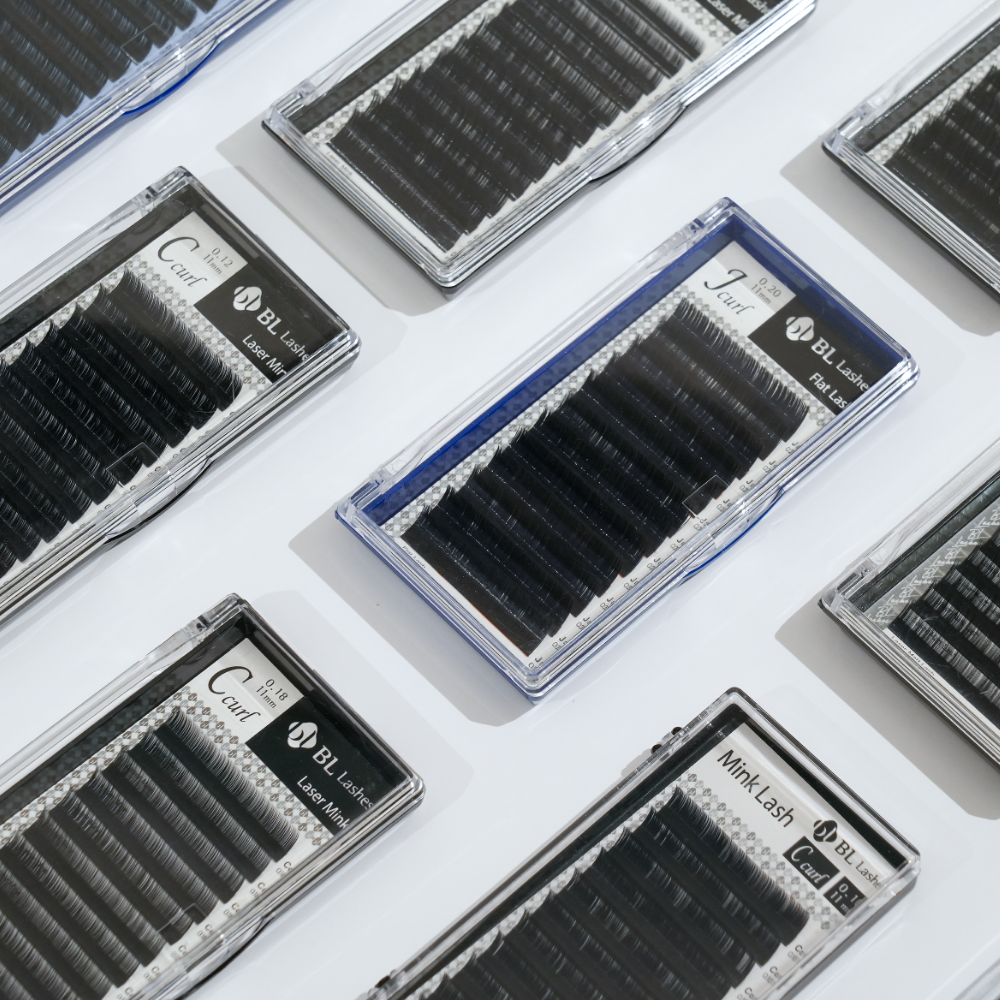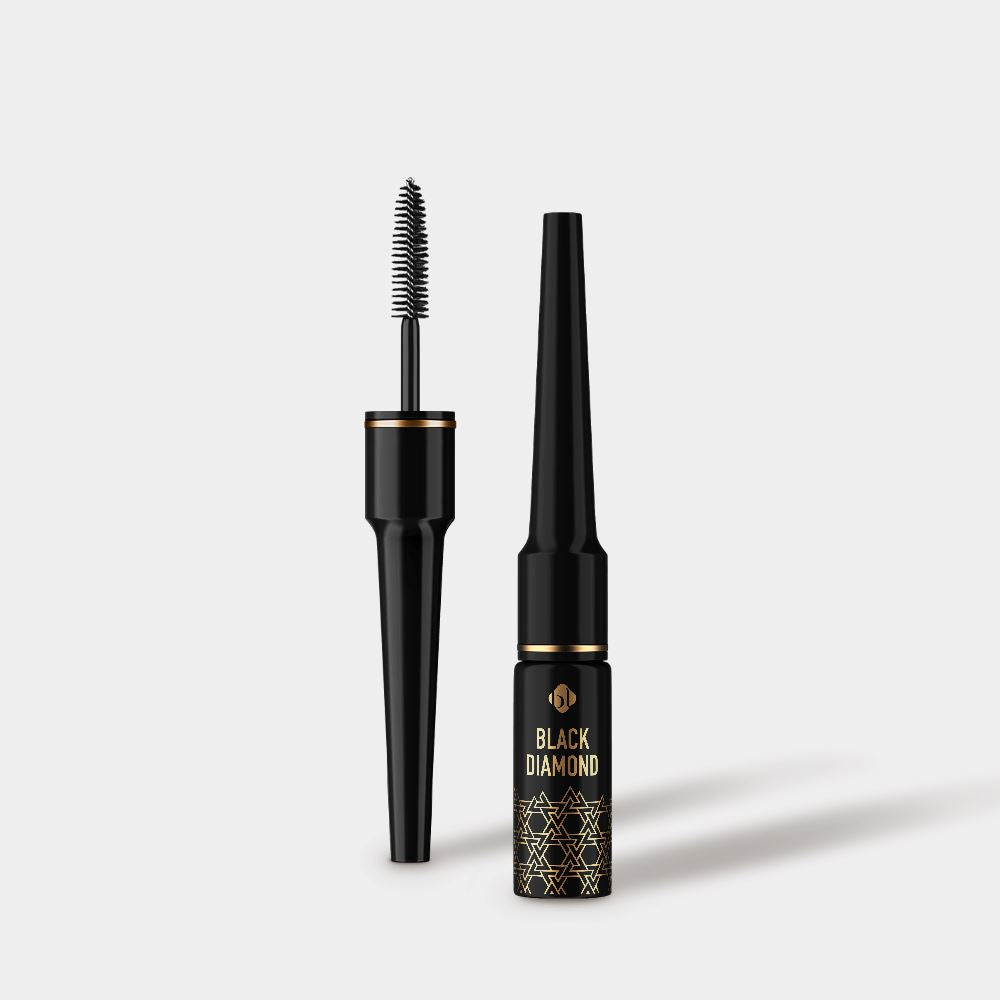With all of the different types of lashes available, it can become confusing when trying to narrow down on the differences and which one is right for whom.
Just what are mink lashes anyway? What is the difference between synthetic mink lashes and real fur mink lashes?
Mink lash extensions are the most widespread lash types in the lash industry today, and we are here to help you understand what they really are.
In this article, we will answer some of the most frequently asked questions:
- What are mink lashes made of?
- Are mink lashes made from the fur of the animal mink?
- How are mink lashes different from silk lashes?
- How about cashmere, velvet, and sable lashes?
- How to use mink lashes
- Which mink lash is the best?
What are mink lashes made of?
The term 'mink lash' refers to eyelash extensions made with a synthetic material called PBT.

This material is a plastic substance that has excellent shape memory, does not deform for a long time after processing, and has excellent heat and chemical resistance.
PBT is used not only in eyelash extensions but in some common household items such as toothbrushes!
BL Mink Lashes are all made of top quality Korean PBT. By using the best quality Korean-made PBT fiber, we make sure our lashes are soft, lush, and flexible.
Are mink lashes made from the fur of the animal mink?
“Where do mink lashes come from”?
Not surprisingly, one of the most common questions we receive about mink lashes is where they come from. The word 'mink' tends to confuse many artists and lash clients, and many of them tend to believe that the lashes are made of animal hair.
We are here to close this argument once and for all! Generally, mink lashes are only called that because their texture is as soft as the animal mink hair.
So yes, mink lashes are vegan and cruelty-free, and they have nothing to do with the animal mink.
Some brands will even call it faux mink to prevent confusion.
What are real mink lashes?
Of course, there do also exist mink lash extensions made from real mink fur, like BL Natural (Real Mink) Lashes.

Real mink lashes provide a light, soft, fluffy, and, ultimately more natural look, closely matching natural human lashes.
They’re not for everyone, but real mink lashes are best for clients who are looking for an incredibly natural look. Real mink lashes typically last longer because they are so light. The downside to this type of extension is that they are expensive.
Silk vs mink lashes
Silk and mink lashes are basically made of the same material, synthetic PBT. The main difference between the two is not in their material, but in their shape, finish, and weight.

Silk lashes have a longer taper, meaning the main body of the lash appears thinner than mink lashes. If you compare silk and mink lashes of the same thickness, you’ll notice silk lashes look lighter and softer and result in a more natural look.
To make it more natural, some lash suppliers also add semi or fully matte finishing on silk lashes. However, this is not the main characteristic that defines silk lashes but more of a nice add-on feature.
Check out Our Silk Lashes here.
How about cashmere, sable, and velvet lashes?
First of all, whether they’re called mink, silk, cashmere, sable, or velvet, they are ALL made of synthetic PBT, not from natural materials (except for products that are clearly specified as using animal hair, like real mink lashes).
Once again, these names are used by different brands to differentiate between how soft and lush their textures are. They have no correlation to the natural material itself.
For the same PBT mink eyelash extensions, some lash brands would call it mink while others would call it royal sable. The same goes for flat eyelash extensions. Some brands might call it cashmere lash, while others call it ellipse lash.
Because many lash brands call the same product with different names, we highly advise you to read the product description with care before purchasing a new type of eyelash extension.
It could be what you already have but just in a different name!
Mink lashes vs flat lashes
Both mink and flat lashes are made from the same material, synthetic PBT. The difference between these two types of lash extensions is in their shape and weight.
Mink lashes have a round shape whereas flat lashes have a flatter, inverted oval shape. This flat shape allows the lash extensions to really fit in with natural lashes, which allows for longer retention than mink lashes.

Find BL Flat Lashes and Super Flat Lashes here.
However, because of their flat (square-ish) shape, flat lashes are not ideal for volume lash extension. Flat lashes are only used for classic lash extension or for hybrid style extension.
Mink lashes and their versatile use
Mink lashes have been loved for practically the entire history of eyelash extensions. Why? Because they are incredibly versatile to use. Here are some of the most popular types of mink lash extensions and the ways you can use them:
Classic mink lash extensions
Mink lashes are a fantastic choice for a clean and elegant classic lash set. Since mink lashes have the widest variety of curls, thicknesses, and lengths, they can give your customers a various selection of looks from natural to dramatic.
You’ll want to use a thickness from 0.10mm to 0.25mm for the classic lash extension. Choose the thickness depending on the condition of the natural lash. BL Mink Lashes offers a wide variety of thicknesses, curls, and lengths to choose from.
We offer 0.10, 0.12, 0.15, 0.18, 0.20, and 0.25 thick mink lashes for classic mink lash extensions.
Volume lash extensions
Mink lashes are great to use for creating a show-stopping volume lash set. Their round base makes it easy to wiggle and roll out the lash fans.

You’ll want to use a thickness from 0.03mm to 0.07mm for the volume lash extension. To learn how to calculate the volume fan and weight, read these guidelines: How To Calculate Volume Lash Size & Weight.
We offer 0.03, 0.05, 0.06, and 0.07 thick mink lashes for handmade volume lash extensions.
Color mink lashes
Create a subtle color gradation by mixing color mink lashes with black lashes, or create a mesmerizing look by using a full set of all color shades.

These rainbow hue individual synthetic mink lashes are increasingly popular these days. Give your customers creative looks using BL Rainbow Mink Lashes.
Bottom lash extensions
Add depth to the bottom lash line and create a more cohesive look with mink lash for bottom lash extension.
The bottom lash extension gives extra definition and length, and it can help open up your client's eyes, making their lash extensions seem even more notable and dramatic.
Read Bottom lash extensions - How to tutorial
Laser mink lash extensions (BL Laser Lash™)
We at BL Lashes wondered why lash extensions can’t be a part of solving retention issues. Studies on human hair carried out at our research facilities have revealed that scaly and uneven surfaces on hair cuticles allow for superior adhesion compared to smooth surfaces.
Inspired by these findings, we went on to create the world’s first patented laser-processed mink lash extensions.
Thanks to the sections on BL Laser lashes that hold the glue, the adhesive is prevented from forming a glue droplet at the root of the extension lash. BL Laser lashes work wonders with any glue regardless of its viscosity.

These individual synthetic mink lashes are curled and tapered to perfection, and they’re versatile and long-lasting. Give your customers a various selection of looks from natural to dramatic. BL Laser Mink Lashes.

Which mink lash extensions are best?
Which mink lashes are the best depends entirely on your preferences and possibilities. We at BL Lashes are here to provide compatible mink lashes for every taste and need. Feel free to ask us about which type of lash extension is best for you.
Ready to try out the best quality mink lashes? Get your first tray of BL mink lashes with a discount of up to 50% with a BL Pro Account.

This blog is protected by copyright law. Reproduction or rewriting without permission is strictly prohibited.
Read more about lash extensions here:
Eyelash Extensions for Monolid Asian Eyes
Eyelash Extension Chart- Curl, Diameter and Lengths

















